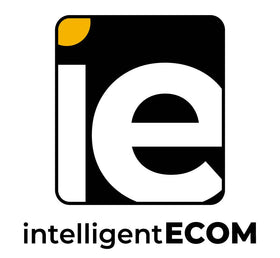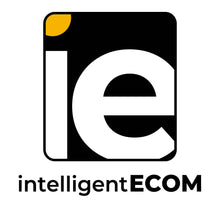Contextual advertising is a hot topic these days, with many businesses claiming that it is the future of advertising. The contextual advertising boom is here and businesses of all sizes are taking advantage of it. Whether you're a small business trying to get your message out to more people or an established business looking to keep up with the Joneses, contextual advertising is a great way to do just that.
According to a survey conducted by GumGum, 61% of US advertisers use contextual advertising, and 24% of advertisers have planned to increase their ad spending on contextual advertising next year. 
Read More: ALL ABOUT PAID ADVERTISING: TOP CHANNELS, BENEFITS & IMPLEMENTATION TIPS
What is Contextual Advertising?
Contextual advertising relies on the use of context-based keywords and content to target potential customers.It uses information about the user, such as their location, activity, and interests, to target ads to them. There are many reasons why businesses are interested in contextual advertising.
- One reason is that contextual advertising is more effective than traditional advertising. It engages users with ads that are relevant to their interests, which leads to increased sales.
- Another reason is that contextual advertising is more personal. It allows businesses to know more about their customers than ever before. This information can be used to create more targeted ads, which leads to increased sales.
- Finally, in a recent survey from Startpage, it was found that 72% of Americans are “very concerned” to “extremely concerned” about their online privacy. For them, contextual advertising is the best place to start since contextual advertising doesn’t encourage utilizing cookies and personal information.
Why is Contextual Advertising So Hot Right Now?
Contextual advertising is often used in combination with other methods of digital marketing such as search engine optimization (SEO), pay-per-click (PPC) campaigns, and display ads. The reason contextual advertising is so powerful is that it allows brands to directly engage with their customers in a way that is relevant to them and it is highly effective in reaching the right people at the right time. These kinds of ads are tailored specifically to each user’s interests, making them more likely to convert than traditional methods of advertising.
For example, if I'm shopping for a new phone and I'm looking at a Samsung phone, a contextual ad would show me an ad for a Samsung phone that is similar to the one I'm looking at. This way, Samsung can capitalize on
Moreover, There are several benefits of contextual advertising that should be known by anyone who wants to use it successfully:
- It increases click-through rates and conversion rates.
- It allows you to connect with users on a deeper level, building trust and loyalty.
- It improves the overall user experience by providing better information about the ads and their products/services. the contextual data that they have on me and continue to advertise to me even after I've made a purchase.
The key to creating successful contextual campaigns lies in understanding your target audience and crafting your message around what resonates with them.How to Take Advantage of the Contextual Advertising Boom

There are a few different ways to take advantage of contextual advertising. You can use this type of advertising to reach a wider audience, increase sales, and even attract new customers.
Here are a few ways to take advantage of contextual advertising:
1. Use location-based ads: Most smartphones have a GPS chip that can track the user's location. This information can be used to serve ads that are more relevant to the user. For example, if you're a restaurant and you know that a customer is near a park, you could serve up an ad for a picnic basket.
2. Use voice recognition technology: This technology is becoming more and more accurate and can be used to target ads based on the user's voice. For example, you could target ads to users who are talking on the phone and ask them to listen to a brief ad before they hang up.
3. Use social media ads: Facebook and Twitter are two of the most popular platforms for contextual advertising: You can use this type of advertising to target a specific audience, create a campaign, and track the results.
4. Use email marketing: Email marketing is a great way to reach a large audience quickly. You can use this type of advertising to promote special sales, new products, or services.
5. Use display advertising: Display advertising is the most traditional form of contextual advertising. This type of advertising is used to display ads on websites, in newspapers, and on television.
6. Creating quality Content: One way to take advantage of the booming contextual advertising market is to focus on content. This can include things like creating interesting and informative blog posts, videos, and infographics that contain relevant keywords related to your product or service. Doing this will help you get noticed by search engines, which will in turn bring more visitors to your website or blog.
Recommended Reading: GOOGLE'S PERFORMANCE MAX CAMPAIGNS: CREATE AUTOMATED GOAL-BASED CAMPAIGNHow to Measure the Effectiveness of Your Contextual Ads

When it comes to contextual advertising, there are a few key things to keep in mind. The first is to measure the effectiveness of your ads. This can be done in a number of ways, but the most important aspect is to track the conversion rate. In order to do this, you'll need to track both the number of people who see your ad and the number of people who take action. You can use Google Analytics Tool to do this
Once you have this information, you can start to understand which ads are working better and why. This is where your targeting skills come into play.
Be Contextual & Personalize Your Brand
Contextual advertising is a hot topic right now and for good reason. It works, it's cost-effective, and there's a lot of room for creativity. Overall, taking advantage of the contextual advertising boom could be a great way to increase brand awareness, drive leads and sales, and maximize ROI. With the right approach and understanding of how contextual advertising works, any business can benefit from this powerful tool.
Get in touch with our experts in eComIntegrate to know more.
[nerdy-form:11564]






Leave a comment